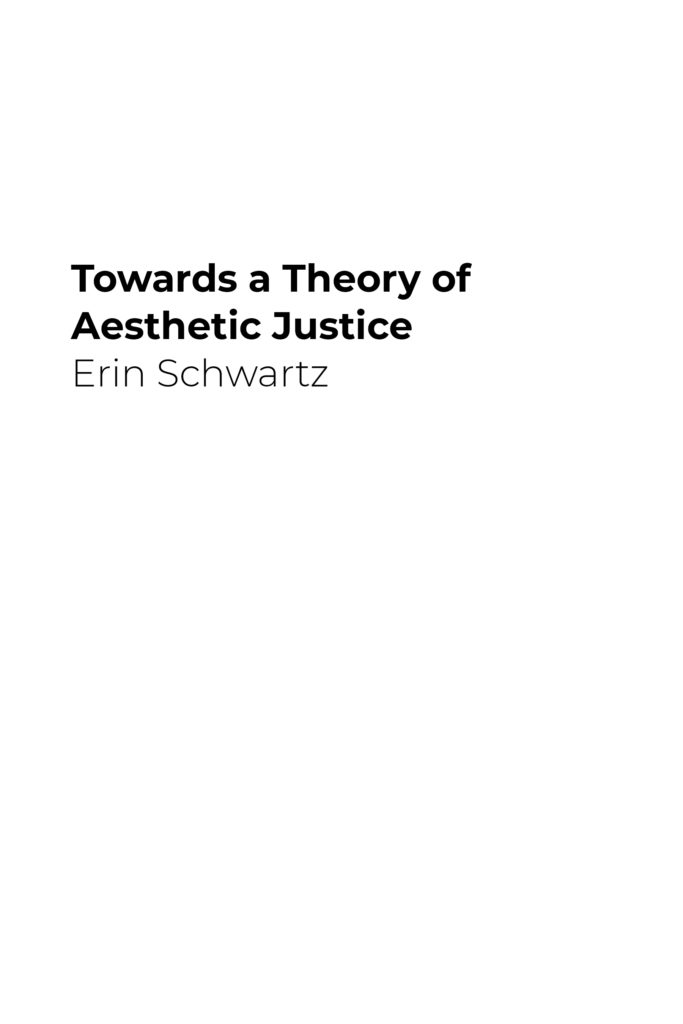
On a spring morning in 1972, thirty-two high-rise apartments come crashing to the ground. Smoke, atomized concrete and fragments of beloved objects left behind stand frozen in time, then are propelled outward, twisting through the air, by the power of the dynamite laced through the building’s skeleton. Nobody is left in these apartments when they fall. They had been slowly evacuating for a long time: residents leaving as memories of violence, both singular and systemic, overwrote former sites of community. These walls, stairs, pipes, wires have failed so thoroughly to protect the living bodies who inhabited them that, according to the state of Missouri, their total annihilation is necessary. The towers were praised just two decades before as an exemplar of modernist architecture used for social good. Now, they are turned into rubble and dust that disperses in a cloud.
What comes after the high-rises fall? With the advent of postmodernity, we saw the partial disintegration of a violent universal—the Western subject—a monolith more difficult to deconstruct or to pulverize than the failed housing projects in Missouri. With the end of modernism, the white male colonizer came under critique from all sides. A multitude of subjects pulled back the curtain to reveal a Wizard of Oz, a hunched and impotent figure at the controls of a massive, suddenly absurd green mask. Postmodernity did not kill the Western universal in-itself, but perhaps it poisoned it by revealing the violent apparatuses by which its universality is accumulated.
But these full-throated critiques saw their heyday forty years ago. We now stand at the point of exhaustion. A poisoned universal is before us, and its sickened body seems not necessarily worth saving. And the same violent apparatuses of oppression are as robust as ever, despite the atrophy of their totalizing organ; the poison seems to have missed its mark. It is at this moment that critique appears of contemporary art’s indeterminacy, relativism, subjectivity, the lack of criteria for evaluating value. The argument is made that multiculturalism—the explosion of difference that rebelled against modernist standardization—has been recuperated by late capitalism. The language of protest appears in McDonald’s commercials, and every stock image of the professional workplace displays an unimpeachably diverse composition of ethnicities and genders. Of course everyone is different; everyone is just as different as everyone else. Now, would you like to buy this shampoo for girls who went to public school in the 1990s?
There is a problem with this, though: recuperation has a remainder. There are things picked up and things left behind, indigestible bits that must be spit out. What type of difference did late capital- ism swallow up, and what will it find undigestable?
We say that multiculturalism has been recuperated by late capitalism, but that recuperation has not been thorough. When problematizing the indeterminacy of contemporary art, the target should not be subjectivity-in-itself, it should be power: the structures of oppression laid bare by political critique that still persist. Establishing criteria for art on the shifting sands of our contemporary rubrics of value is impossible not be- cause multiculturalism has been thoroughly territorialized by capitalism, but because difference is the ground on which capitalism is being undermined. True difference, constituted through communal encounters and an ethical engagement with the other, is a poison pill to capitalism. It is only its reduction — difference-without-another — that can support large-scale exploitation of laborers, the abstraction of objects away from the materiality of their production, the conflation of the subject with pure exchange value.
The indeterminacy of critique we see is a fissure in the ability to accumulate sufficient cultural capital to create and enforce categories of value. Contemporary art is indeterminate because capital is losing its power to wholly determine. This is to say that contemporary art must concern itself with justice. The context of its indeterminacy is the growing chasm between difference as represented by capitalism—a difference that totalizes— and true difference-in-relation. And to work towards stability, the artist must throw their weight to one of these poles. Aesthetics oriented towards a justice of difference do not necessarily have to be political, or didactic: there are a multitude of just practices. But a contingent ethics that recognizes our time as a time of flux is necessary.
Difference and the universal are not opposites— there simply exists a certain discourse of universality whose antithesis is difference. Jettisoning the universal by mistaking this part for the whole was the mistake of postmodernism. Universality and difference are both integral to relation: we emerge as individuals through a transcendent recognition of the Other, of someone outside of ourselves. We are distinct individuals born out of the shared potentiality that preceded us. Moving forward, we need a revitalized universal constituted of difference, an ethics that manifests from the entanglement of all things.
